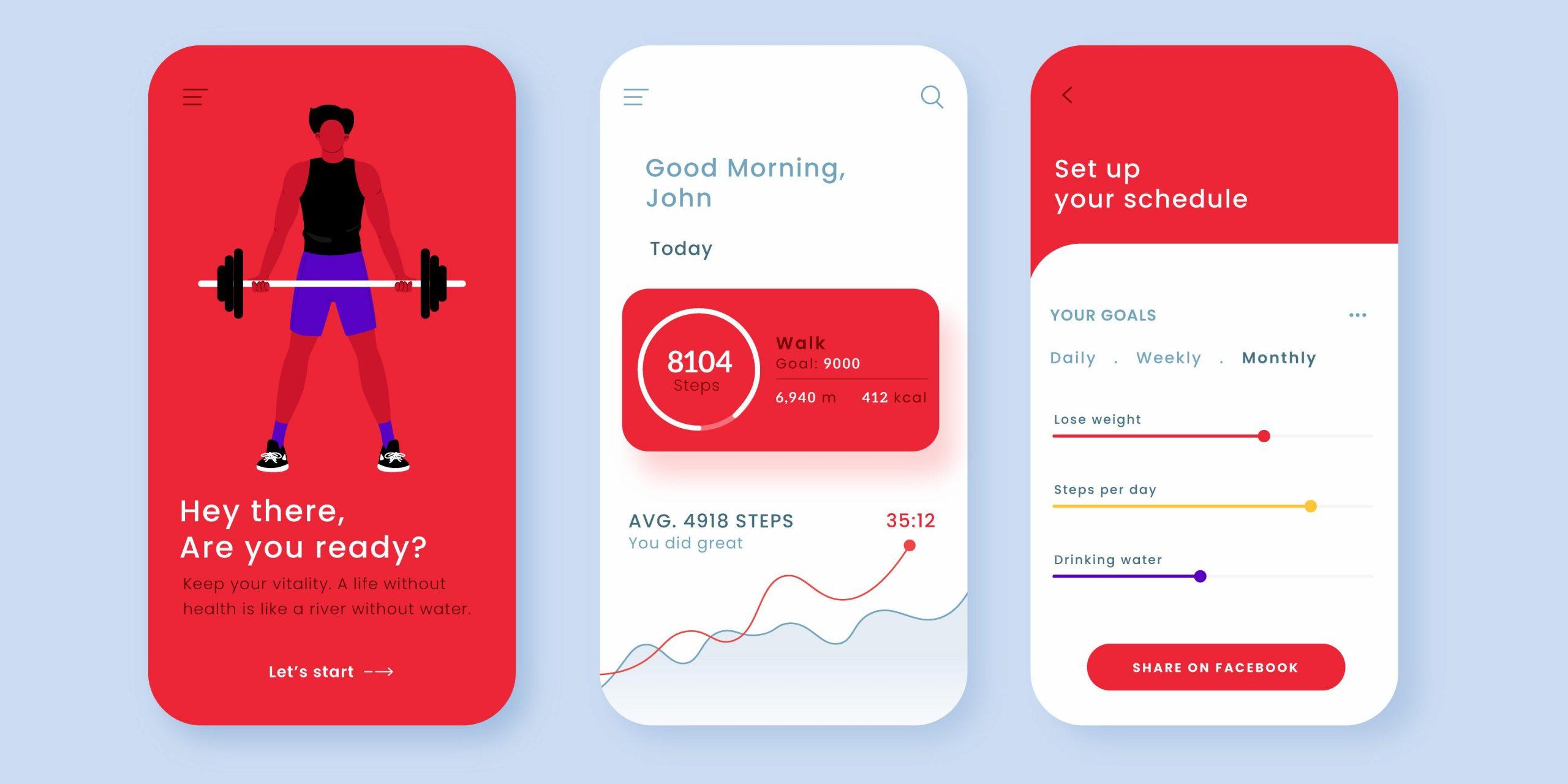In the digital age, where our smartphones have become extensions of ourselves, fitness apps have emerged as ubiquitous companions on our journey to better health. With promises of personalized workout plans, calorie tracking, and progress monitoring, these apps have transformed living rooms into gyms and sidewalks into running tracks. Yet, beneath the sleek interfaces and motivational notifications lies a pressing question: are these digital trainers encouraging us to push beyond healthy limits? As we delve into the world of fitness apps, we explore whether their guidance is fostering a culture of well-being or inadvertently steering us toward unhealthy workout habits. Join us as we navigate the fine line between motivation and obsession, examining the impact of technology on our pursuit of physical fitness.
Balancing Motivation and Obsession in Fitness Tracking
In the quest for healthier lifestyles, fitness apps have become indispensable tools, offering personalized insights and real-time progress tracking. However, the line between motivation and obsession can blur, leading to potentially unhealthy workout habits. While these apps encourage consistent activity, they may inadvertently foster a fixation on numbers—steps, calories, heart rates—that can overshadow the holistic nature of well-being. As users chase daily targets, the pressure to outperform previous records can turn fitness into a relentless pursuit rather than a joyful journey.
- Data Overload: Constant notifications and updates can overwhelm, causing users to prioritize metrics over physical and mental health.
- Comparison Culture: With social features, there’s a tendency to compare one’s progress with others, sometimes leading to feelings of inadequacy or anxiety.
- Ignoring Body Signals: In the race to meet app goals, users might ignore their body’s need for rest and recovery, increasing the risk of injury.
To strike a balance, it’s crucial for individuals to listen to their bodies, use app data as a guide rather than a gospel, and remember that fitness is a personal journey—not a competitive sport. Emphasizing self-awareness and mindfulness can transform these digital tools into allies for sustainable health rather than triggers for unhealthy obsessions.

Analyzing the Psychological Impact of Constant Monitoring
In the realm of digital health, the omnipresence of fitness apps brings both empowerment and subtle psychological challenges. While these tools offer users a comprehensive view of their physical activities, the relentless collection and analysis of data can lead to unforeseen mental stress. Users might find themselves entangled in a cycle of self-scrutiny, where the constant need to meet or exceed daily goals transforms into an obsession rather than a motivator. This hyper-focus on metrics, such as step counts or calorie burns, can inadvertently overshadow the fundamental joy and intrinsic benefits of exercise.
Some common psychological effects include:
- Increased Anxiety: The pressure to consistently outperform previous records can lead to heightened stress levels.
- Perfectionism: A fixation on achieving ‘perfect’ scores or stats can result in dissatisfaction and diminished self-esteem.
- Overexertion: Users may push their physical limits to avoid the guilt associated with unmet targets, risking injury.
Ultimately, while fitness apps can be powerful allies in personal health journeys, it’s crucial to maintain a balanced approach that prioritizes well-being over numbers.

Recognizing Red Flags: When Fitness Goals Become Harmful
In the pursuit of physical fitness, the line between dedication and obsession can become dangerously blurred, especially when fitness apps, with their gamified elements, push users to achieve increasingly ambitious goals. While these apps are designed to motivate, they may inadvertently encourage unhealthy habits. Excessive exercise, for instance, can lead to burnout, injuries, and a detrimental impact on mental health. The constant pressure to outdo previous performance metrics can overshadow the body’s natural need for rest and recovery.
Here are some red flags that may indicate a shift from healthy ambition to harmful behavior:
- Ignoring Pain and Fatigue: Persisting through workouts despite signs of physical distress.
- Compulsive Tracking: Feeling anxious or guilty if daily activity goals aren’t met.
- Neglecting Social and Personal Life: Prioritizing exercise over family, friends, and other responsibilities.
- Drastic Dieting: Making extreme dietary changes to meet unrealistic body image standards promoted by app challenges.
Recognizing these signals can help users maintain a balanced approach to fitness, ensuring that their journey remains positive and sustainable.

Crafting a Healthier Approach to Digital Fitness Guidance
In the quest for a fitter lifestyle, digital fitness apps have become a ubiquitous part of many people’s daily routines. However, the question arises: are these apps fostering healthier habits or inadvertently promoting unhealthy ones? While these platforms offer convenience and accessibility, there are potential pitfalls users should be aware of. It’s crucial to understand the nuances of digital fitness guidance to harness its benefits effectively.
Consider the following aspects:
- Personalization vs. Generalization: Many apps use algorithms to provide personalized workouts, but they can sometimes be too generalized, failing to consider individual needs, limitations, and health conditions.
- Quantity over Quality: There’s a tendency to focus on metrics like step counts and calories burned, which can lead to over-exercising or ignoring the quality of the workout.
- Lack of Professional Guidance: While some apps include input from fitness experts, they cannot replace personalized advice from a qualified professional who can tailor a program to suit individual goals and health requirements.
Insights and Conclusions
As we navigate the digital age, the intersection of technology and fitness continues to evolve, presenting both opportunities and challenges. Fitness apps, with their vibrant interfaces and data-driven insights, have undeniably transformed how we approach our health and wellness journeys. Yet, as with any tool, the key lies in how we wield it. While these apps can motivate and guide, they also possess the potential to foster unhealthy workout habits if used without mindfulness and balance.
As we conclude this exploration, it’s clear that the responsibility falls on us—the users—to engage with these digital companions thoughtfully. By prioritizing our well-being over arbitrary metrics, listening to our bodies, and seeking professional guidance when necessary, we can harness the benefits of fitness technology without falling prey to its pitfalls.
fitness apps are just one piece of the puzzle. True wellness is a holistic journey, one that blends technology with intuition, discipline with compassion, and ambition with self-care. As we move forward, let us remember that while apps can chart our progress, only we can truly define what a healthy lifestyle means for ourselves.

